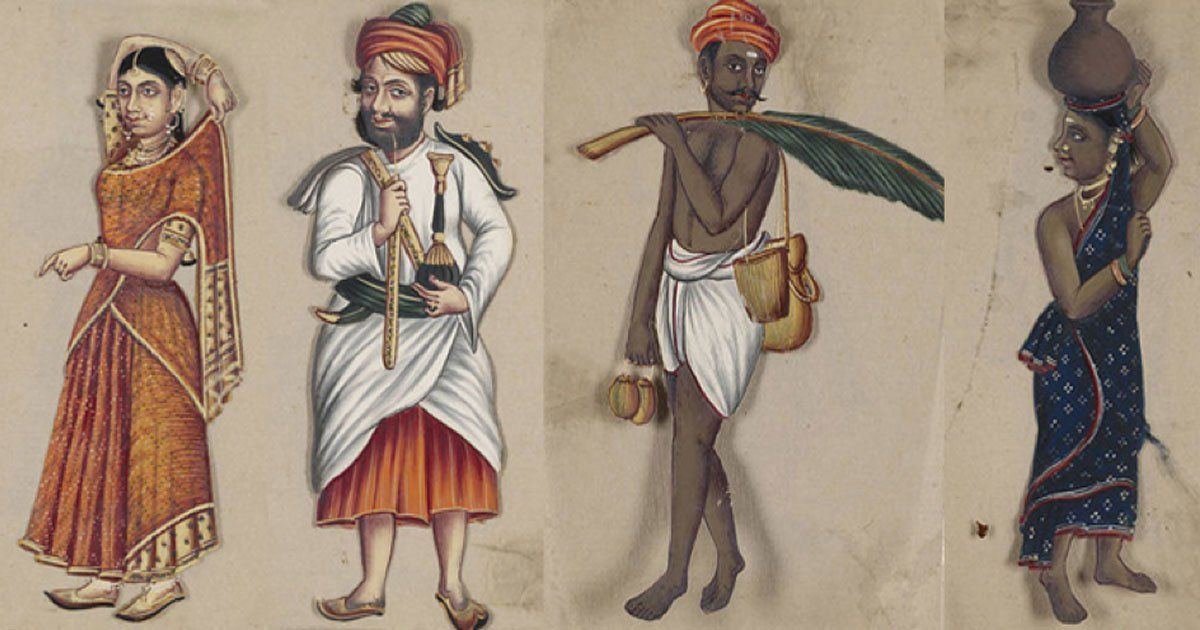Unlike the Indies and Japan, Europe has unfortunately not been able to preserve a visible form of Tradition that is uninterrupted and whose origin is lost in the mists of time. In other words, even from the dawn of its history, not to mention its pre-history, it has nowhere continued to worship the same gods.
On the other hand, it is her sons, and even only those of a very limited West, who, after having cultivated the experimental sciences, invented one after the other all the modern industrial techniques, as well as the medical art and the ‘preventive’ hygienic measures of today and yesterday, which have so lamentably contributed to the overpopulation of the continent, and soon of the planet, and to the sacrifice of the quality of men to their number. And increasingly, in this West in the narrow sense of the word, people’s attachment to the pomp, customs and teachings of exoteric Christianity has relaxed in favour of an ever greater infatuation with ‘Science’ and especially for the applications of science as a source of wealth, easy enjoyment and power, both individual and collective.
This is especially true of the 19th century, if we look at the material achievements, the staggering progress of the sciences of the measurable world and the industries that depend on them, and the naive confidence, increasingly widespread in all domains (including the ‘moral’ domain) parallel to the progress of the sciences and the generalisation of their applications. But don’t be fooled!
The cult of positive science based on the experimental study of phenomena, and the dream of enslaving Nature to man through the application of scientific discoveries in the search of human well-being, have much more distant origins. To understand them, we must go back to the 17th century, Cartesian rationalism and the anthropocentrism that is inseparable from it. We must go back even further, to that fever of universal curiosity combined with the Promethean will of ‘man’ to dominate, the characteristic features of the Renaissance.
The physiologist Aselli, who studied the process of digestion in the open entrails of living dogs, is the counterpart of Claude Bernard, two centuries later. And Descartes himself, with his frenzied anthropocentrism—his famous theory of ‘machine animals’—as well as his eagerness to examine everything, to dissect everything, to want to know everything by the sole means of ‘reason’, and Francis Bacon, for whom science is above all the means that ensures the ‘triumph of man’ over Nature and so many others who, between the 1500s and 1750s, thought and felt the same, are also the fathers, or elder brothers, of all the more recent enthusiasts for science, technology, and the salvation of man by both—the Victor Hugos and the Auguste Comtes, no less than the Louis Pasteurs, the Jenners, the Kochs, and, closer to home, the Pavlovs, the Demikhovs[1], and the Barnards.
Certainly, the European Middle Ages had, alongside its undeniable greatness, weaknesses and barbarities which classify it without question among the epochs of the advanced Dark Ages. It had, among other things, all the shortcomings linked to his narrowly Christian faith, and therefore rigorously anthropocentric, faith: a faith whose esoteric aspect didn’t even embrace anything beyond ‘Being’ (in contrast to Hindu esotericism, for which Non-Being is also a manifestation of the fundamental ‘Non-Duality’). It deserves the sometimes virulent attacks of thinkers and artists who were most hostile to it but… provided that it is made clear that the centuries that followed it, far from being better than it from viewpoint of the essentials, were worse; worse, because they got rid (and how slowly!) of some of its superstitions and atrocities, only to replace them by superstitions of another order but just as crude, and by atrocities just as revolting, and this, without retaining anything of what had made its greatness.
It deserves the attacks of its detractors provided that they are fair, and recognise that within the Dark Ages, which covers almost everything we know about world history it represents, despite everything, a cultural and above all a spiritual ‘recovery’: a period when, with all the narrow-mindedness, all the religious intolerance inherited from the authors of the Old Testament, and all the anthropocentrism inherent in Christianity as it has come down to us, Western Europe (and Eastern Europe, for all this is also true of Byzantium) was then closer to the traditional ideal order than it was at the time of the decadence of Greco-Roman Paganism, and above all than it has been since the 16th century.
There is no doubt that Christian esotericism—which the initiates of a spiritual elite still lived, whose existence until the 14th century at least, and perhaps even afterwards, for some decades more—ensured this connection of the whole social edifice—the feudal pyramid where, in principle, everyone was in his place—with its secret archetype.
The light of a more-than-human knowledge penetrated from above, through symbols, into the life of the people, and in particular into that of the craftsmen-masons, woodcarvers, glassmakers, blacksmiths, weavers, goldsmiths. It was expressed in the world of forms and colours through the wealth of anonymous and disinterested creation that we know, from the Romanesque or Gothic or Byzantine cathedrals to the delicate illuminations of gold, azure and vermilion; creation, I repeat, anonymous and disinterested: of a beauty whose secret was to be sought in truths independent of time. The practical utility of the works of art it inspired was nevertheless less important than their ‘meaning’, revealing a world held to be more real than the visible.
It is curious, to say the least, to note that it is precisely when initiatory knowledge, and thus knowledge of the Eternal, becomes obscured in the elite that had previously held it, and when, as a result, the spiritual ‘meaning’ of every work of beauty increasingly escapes the artist and the craftsman, that the thirst for investigation of the future using systematic experimentation begins to spread. It is from this moment onwards that the demand for visible and tangible proof of all knowledge, the refusal to believe in the existence of the overman (or at least to be interested in it) and the growing preoccupation with the development of the world’s material wealth for the benefit of the greatest possible number of people converge—in other words, experimental science and the technology, both industrial and medical that derive from it, are increasingly being imposed.
And it is interesting to note that this is not a unique state of affairs, appearing only with the decline of Christianity at the dawn of the Modern Age. The same moral and cultural phenomenon, the same transfer of values manifested itself, along with the weakening of the traditional faith, during the long and slow agony of the Ancient Greek World, from the end of the fourth century BC, until the end of the next century. It was then, already in the field of letters and even more so than at the time of the Renaissance, that began the reign of quantity at the expense of quality.
There was a proliferation of polygraphs, rather like in our own time, and an almost complete absence of major works, apart from Aristotle’s (admittedly gigantic) work, which was still in its infancy when the period was just beginning. It was a time of grammarians, not poets; of scholars of the word, not creators through the word; of people who knew well and were able to analyse in detail, the work of their predecessors, not of literati whose own work, like that of the tragic authors of the classical Greek period, was to dominate the centuries to come. The geniuses of the verb and pure thought—the Virgils, the Lucretia—appear, in the famous century of Augustus, no longer in Greece or Hellenised Sicily, or Alexandria, but in Italy proper, already in the sphere of that West from which will eventually emerge, still under the influence of the peoples of the North, a young Europe, the only true one.
______ 卐 ______
 Once we finish translating Savitri’s book from French to English we’ll resume the translation of Karlheinz Deschner’s book about the Middle Ages. We discover a very different medieval history once, instead of reading Christian authors, we read those who have actually left Christianity behind, as Savitri did.
Once we finish translating Savitri’s book from French to English we’ll resume the translation of Karlheinz Deschner’s book about the Middle Ages. We discover a very different medieval history once, instead of reading Christian authors, we read those who have actually left Christianity behind, as Savitri did.
I will devote tomorrow to producing a PDF of a German translation by our friend Albus. I refer to Ferdinand Bardamu’s essay on why Europeans must abandon Christianity, a long essay that appears in The Fair Race (see sidebar). This essay mentions the Middle Ages but Kevin MacDonald refused to publish it in his webzine when Bardamu submitted it to The Occidental Observer.
______________
[1] The Russian physiologist who, in the 1950s and 60s, was involved in grafting dog heads onto other living dogs.
 Ferdinand Bardamu’s long essay ‘Why Europeans Must Reject Christianity’ is one of the most important essays in The Fair Race’s Darkest Hour, a book that visitors to this site who want to comment here should have already read.
Ferdinand Bardamu’s long essay ‘Why Europeans Must Reject Christianity’ is one of the most important essays in The Fair Race’s Darkest Hour, a book that visitors to this site who want to comment here should have already read.


